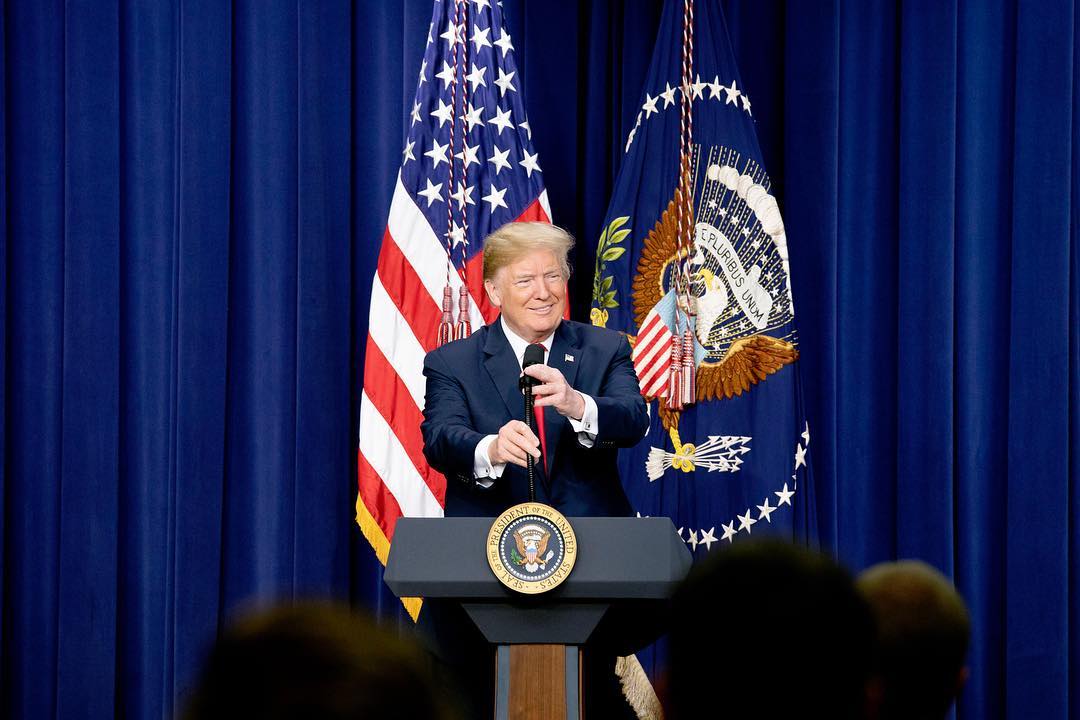In 2025, President Donald Trump’s approach to labor unions has sparked heated debates across the country. With sweeping reforms aimed at reshaping workplace policies, Trump’s administration has implemented measures that some see as pro-business while others argue they undermine collective bargaining rights.
Trump has focused on limiting the influence of labor unions through policies that promote “right-to-work” laws. These laws, which make union membership optional in workplaces, have been supported by many Republican lawmakers and business leaders but criticized by labor advocates. Critics contend these measures weaken unions by reducing their funding and bargaining power.
The administration has also introduced legislation requiring unions to disclose detailed financial records, a move proponents argue enhances transparency. However, labor leaders say the mandate creates unnecessary administrative burdens designed to stifle union operations.
Union Leaders Voice Concerns Over Federal Intervention
Union representatives across the nation have expressed concern over what they view as an erosion of workers’ rights. Richard Trumka Jr., president of the AFL-CIO, called the new measures an “attack on the working class,” arguing that they threaten long-standing protections for organized labor.
A particularly controversial proposal includes restrictions on the ability of unions to strike in sectors deemed critical to national security, such as transportation and healthcare. The administration has defended the measure as a necessary safeguard to ensure economic stability. However, unions argue it is a direct infringement on their ability to advocate for fair wages and working conditions.
While Trump has publicly praised the role of unions in some sectors, such as manufacturing, his policies have often pitted workers against union leadership. Many union leaders believe these tactics are designed to create division within their ranks, weakening their collective influence.
Social Media Reactions Reflect National Divide
Trump’s policies on labor unions have ignited passionate reactions on social media. Supporters argue the reforms level the playing field for businesses, while detractors view them as anti-worker:
- @UnionStrong2025: “Trump’s attacks on unions hurt workers and families. This is about silencing collective voices! #WorkersRights”
- @RightToWorkNow: “Finally, a president who stands up for individual freedoms! No one should be forced to join a union. #FreedomToWork”
- @LaborAdvocate: “Restricting strikes in ‘critical sectors’ is just code for silencing workers. This is an outrage! #UnionBusting”
- @ProBizLeader: “Trump’s reforms are helping businesses thrive. Strong businesses mean more jobs. Unions need to evolve! #EconomyFirst”
- @EverydayWorker: “I’m in a union and I support transparency. Let’s make sure our dues are spent wisely. #Accountability”
- @UnionBuster2025: “Unions have had too much power for too long. Trump’s doing what needs to be done! #AmericaFirst”
Future of Labor Unions in 2025
As Trump’s administration continues to implement labor reforms, the divide between union leaders and the federal government shows no signs of narrowing. Supporters of the administration’s policies believe these changes foster economic growth and worker independence, while critics warn they erode decades of progress in labor rights.
The long-term impact of these measures remains uncertain, but union leaders are preparing for legal battles to protect their members. Meanwhile, businesses appear poised to benefit from reduced union influence, signaling an ongoing power struggle in the labor landscape.



 Taiwan Signals Openness to Renew Ties with Honduras as Election Unfolds
Taiwan Signals Openness to Renew Ties with Honduras as Election Unfolds  U.S. Repatriation Flight Carrying 266 Venezuelan Migrants Lands in Caracas
U.S. Repatriation Flight Carrying 266 Venezuelan Migrants Lands in Caracas  Senators Warn Trump Against Unauthorized Venezuela Strike, Vow War Powers Push
Senators Warn Trump Against Unauthorized Venezuela Strike, Vow War Powers Push  Trump Administration Halts Immigration, Green Card, and Citizenship Processing for 19 Countries
Trump Administration Halts Immigration, Green Card, and Citizenship Processing for 19 Countries  Trump and Lula Discuss Trade, Sanctions, and Security in “Productive” Phone Call
Trump and Lula Discuss Trade, Sanctions, and Security in “Productive” Phone Call  Israel Receives Body of Deceased Hostage as Rafah Crossing Reopening Hinges on Final Returns
Israel Receives Body of Deceased Hostage as Rafah Crossing Reopening Hinges on Final Returns  Trump’s Name Appears on U.S. Institute of Peace Ahead of Rwanda–Congo Deal Signing
Trump’s Name Appears on U.S. Institute of Peace Ahead of Rwanda–Congo Deal Signing  UN General Assembly Demands Russia Return Ukrainian Children Amid Ongoing Conflict
UN General Assembly Demands Russia Return Ukrainian Children Amid Ongoing Conflict  California Launches Portal for Reporting Alleged Misconduct by Federal Immigration Agents
California Launches Portal for Reporting Alleged Misconduct by Federal Immigration Agents  Putin Concludes High-Level Talks With Trump Envoy on Ending Ukraine Conflict
Putin Concludes High-Level Talks With Trump Envoy on Ending Ukraine Conflict  U.S. Soybean Shipments to China Gain Momentum as Trade Tensions Ease
U.S. Soybean Shipments to China Gain Momentum as Trade Tensions Ease  U.S. Defense Chief Pete Hegseth Defends Controversial Second Strike on Suspected Drug-Smuggling Vessel
U.S. Defense Chief Pete Hegseth Defends Controversial Second Strike on Suspected Drug-Smuggling Vessel  UN Chief Says Gaza Operation “Fundamentally Wrong” as Concerns Over War Crimes Grow
UN Chief Says Gaza Operation “Fundamentally Wrong” as Concerns Over War Crimes Grow  Australia Progresses AUKUS Review as U.S. Affirms Strong Support
Australia Progresses AUKUS Review as U.S. Affirms Strong Support  Drones Spotted Near Zelenskiy’s Flight Path in Ireland Trigger Security Alert
Drones Spotted Near Zelenskiy’s Flight Path in Ireland Trigger Security Alert  Michael Dell Pledges $6.25 Billion to Boost Children’s Investment Accounts Under Trump Initiative
Michael Dell Pledges $6.25 Billion to Boost Children’s Investment Accounts Under Trump Initiative  Pentagon Probe Finds Hegseth’s Use of Signal Risked Exposing Sensitive Yemen Strike Details
Pentagon Probe Finds Hegseth’s Use of Signal Risked Exposing Sensitive Yemen Strike Details 




























